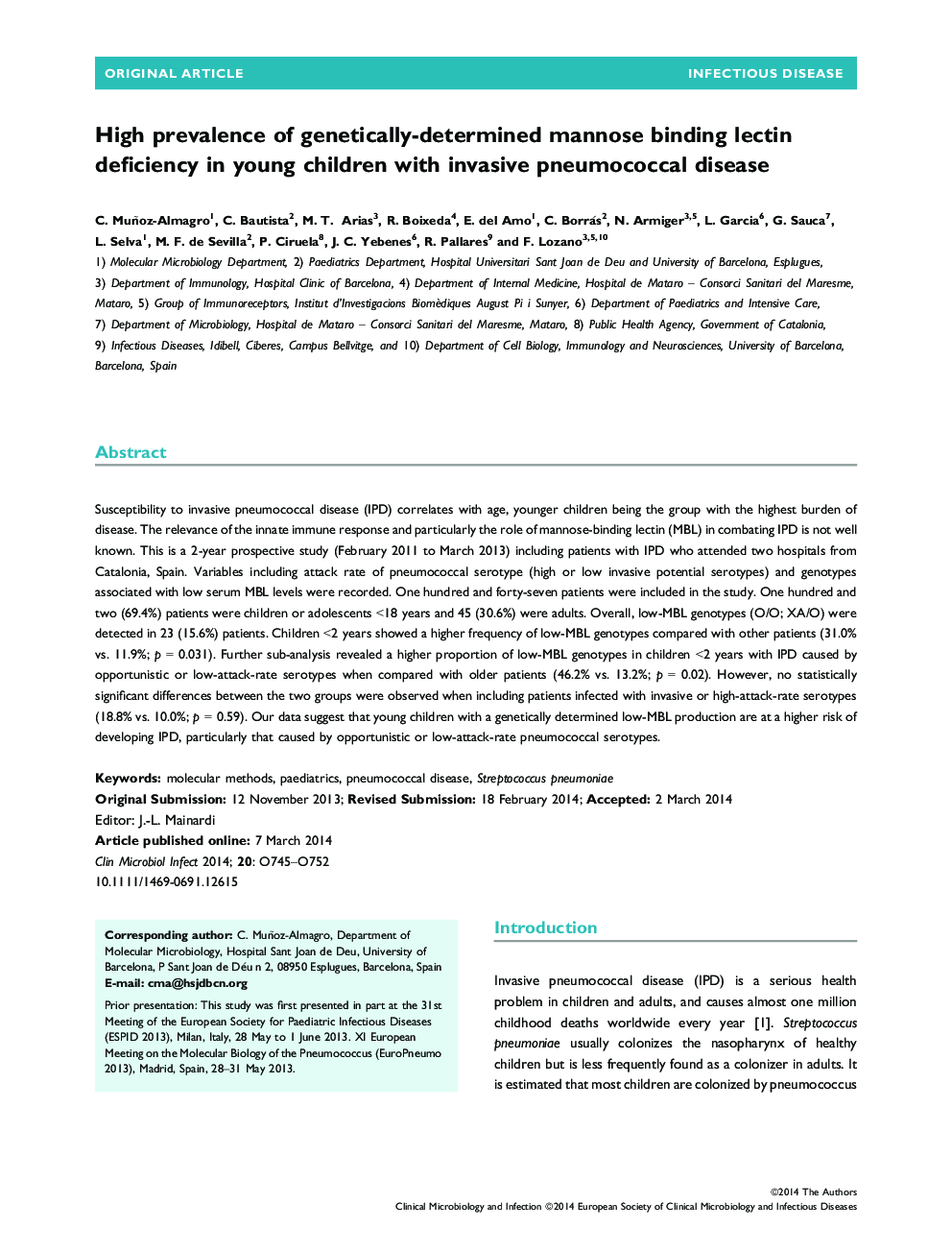| Article ID | Journal | Published Year | Pages | File Type |
|---|---|---|---|---|
| 6130263 | Clinical Microbiology and Infection | 2014 | 8 Pages |
Abstract
Susceptibility to invasive pneumococcal disease (IPD) correlates with age, younger children being the group with the highest burden of disease. The relevance of the innate immune response and particularly the role of mannose-binding lectin (MBL) in combating IPD is not well known. This is a 2-year prospective study (February 2011 to March 2013) including patients with IPD who attended two hospitals from Catalonia, Spain. Variables including attack rate of pneumococcal serotype (high or low invasive potential serotypes) and genotypes associated with low serum MBL levels were recorded. One hundred and forty-seven patients were included in the study. One hundred and two (69.4%) patients were children or adolescents <18 years and 45 (30.6%) were adults. Overall, low-MBL genotypes (O/O; XA/O) were detected in 23 (15.6%) patients. Children <2 years showed a higher frequency of low-MBL genotypes compared with other patients (31.0% vs. 11.9%; p = 0.031). Further sub-analysis revealed a higher proportion of low-MBL genotypes in children <2 years with IPD caused by opportunistic or low-attack-rate serotypes when compared with older patients (46.2% vs. 13.2%; p = 0.02). However, no statistically significant differences between the two groups were observed when including patients infected with invasive or high-attack-rate serotypes (18.8% vs. 10.0%; p = 0.59). Our data suggest that young children with a genetically determined low-MBL production are at a higher risk of developing IPD, particularly that caused by opportunistic or low-attack-rate pneumococcal serotypes.
Related Topics
Life Sciences
Immunology and Microbiology
Microbiology
Authors
C. MuÃoz-Almagro, C. Bautista, M.T. Arias, R. Boixeda, E. del Amo, C. Borrás, N. Armiger, L. Garcia, G. Sauca, L. Selva, M.F. de Sevilla, P. Ciruela, J.C. Yebenes, R. Pallares, F. Lozano,
